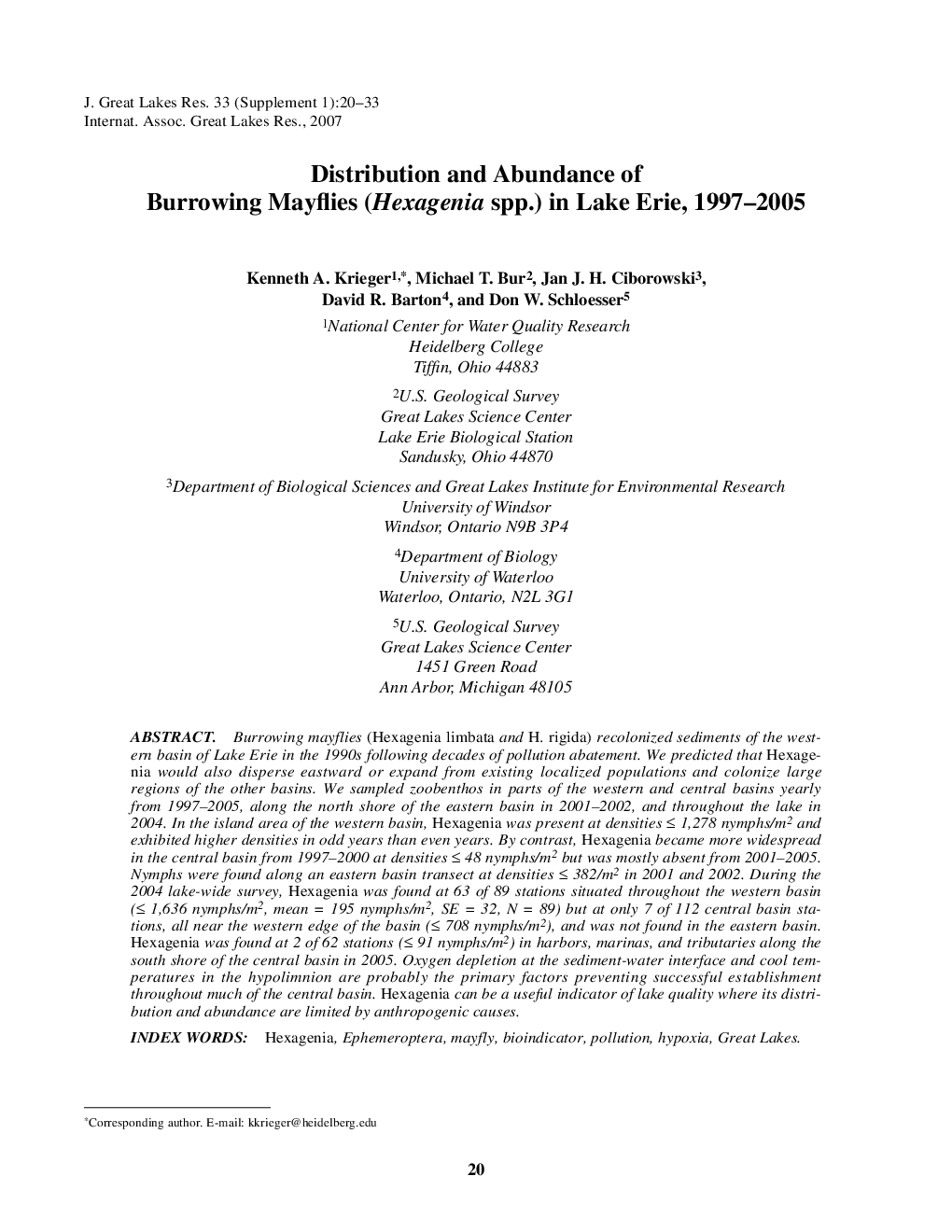| کد مقاله | کد نشریه | سال انتشار | مقاله انگلیسی | نسخه تمام متن |
|---|---|---|---|---|
| 4398643 | 1306699 | 2007 | 14 صفحه PDF | دانلود رایگان |
عنوان انگلیسی مقاله ISI
Distribution and Abundance of Burrowing Mayflies (Hexagenia spp.) in Lake Erie, 1997-2005
دانلود مقاله + سفارش ترجمه
دانلود مقاله ISI انگلیسی
رایگان برای ایرانیان
کلمات کلیدی
موضوعات مرتبط
مهندسی و علوم پایه
علوم زمین و سیارات
علوم زمین و سیاره ای (عمومی)
پیش نمایش صفحه اول مقاله

چکیده انگلیسی
Burrowing mayflies (Hexagenia limbata and H. rigida) recolonized sediments of the western basin of Lake Erie in the 1990s following decades of pollution abatement. We predicted that Hexagenia would also disperse eastward or expand from existing localized populations and colonize large regions of the other basins. We sampled zoobenthos in parts of the western and central basins yearly from 1997-2005, along the north shore of the eastern basin in 2001-2002, and throughout the lake in 2004. In the island area of the western basin, Hexagenia was present at densities ⤠1,278 nymphs/m2 and exhibited higher densities in odd years than even years. By contrast, Hexagenia became more widespread in the central basin from 1997-2000 at densities ⤠48 nymphs/m2 but was mostly absent from 2001-2005. Nymphs were found along an eastern basin transect at densities⤠382/m2 in 2001 and 2002. During the 2004 lake-wide survey, Hexagenia was found at 63 of 89 stations situated throughout the western basin (⤠1,636 nymphs/m2, mean = 195 nymphs/m2, SE = 32, N = 89) but at only 7 of 112 central basin stations, all near the western edge of the basin (⤠708 nymphs/m2), and was not found in the eastern basin. Hexagenia was found at 2 of 62 stations (⤠91 nymphs/m2) in harbors, marinas, and tributaries along the south shore of the central basin in 2005. Oxygen depletion at the sediment-water interface and cool temperatures in the hypolimnion are probably the primary factors preventing successful establishment throughout much of the central basin. Hexagenia can be a useful indicator of lake quality where its distribution and abundance are limited by anthropogenic causes.
ناشر
Database: Elsevier - ScienceDirect (ساینس دایرکت)
Journal: Journal of Great Lakes Research - Volume 33, Supplement 1, 2007, Pages 20-33
Journal: Journal of Great Lakes Research - Volume 33, Supplement 1, 2007, Pages 20-33
نویسندگان
Kenneth A. Krieger, Michael T. Bur, Jan J.H. Ciborowski, David R. Barton, Don W. Schloesser,